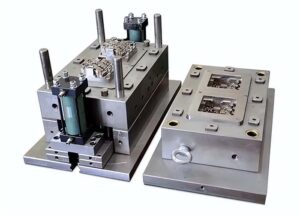After reading the What causes bubbles in injection molding article. You will learn the three factors that cause the injection molding bubbles.
What causes bubbles in injection molding processing?
In production and processing, if the bubbles generated in the injection molded product cannot be processed in time, it will directly affect the plastic injection molding. Why do bubbles in the injection molding production process appear?
The bubble of the injection molded part is the bubble generated inside the plastic forming a round protrusion on the surface. Bubbles not only occur in places where the wall of the plastic product is thick, but they can also occur anywhere else, and they have different sizes and different shapes. The following are injection molded parts that will produce bubbles and vacuum bubbles for three reasons.
What causes bubbles in injection molding 1. Improper control of injection molding conditions
Many process parameters have a direct impact on the generation of bubbles and vacuum bubbles. If the injection molding pressure is too low, the injection molding speed is too fast, the injection molding time and cycle are too short, the amount of material added is too much or too little, the pressure is insufficient, the cooling is uneven or insufficient, and the material temperature and mold temperature are not properly controlled, which will cause plastic molded parts bubbles are generated inside.
Especially during high-speed injection molding, the gas in the mold is too late to be discharged, resulting in too much gas remaining in the melt. For this, the injection molding speed should be appropriately reduced. However, if the speed drops too much and the injection molding pressure is too low, it is difficult to exhaust the gas in the melt, and it is easy to produce bubbles, dents, and undershot. Therefore, special care should be taken when adjusting the injection molding speed and injection mold pressure.
In addition, by adjusting the injection and holding pressure time, improving the cooling conditions, controlling the amount of feed, and other methods to avoid the generation of bubbles and vacuum bubbles. If the cooling condition of the plastic molded part is poor, the plastic injection molded part can be put into hot water and slowly cooled immediately after demolding, so that the cooling rate of the inside and outside tends to be the same.
When controlling the mold temperature and melt temperature, pay attention to the temperature not too high, otherwise, it will cause the melt to depolymerize and decompose, generate a lot of gas or shrink excessively, and form bubbles or shrinkage holes; if the temperature is too low, it will cause the filling pressure Insufficient, the plastic parts are prone to voids and bubbles.
In general, the melt temperature should be controlled slightly lower, and the mold temperature should be controlled slightly higher. Under such process conditions, it is not easy to produce a large amount of gas, and it is not easy to produce shrinkage holes. When controlling the temperature of the barrel, the temperature of the feeding section should not be too high, otherwise, it will cause backflow and return of the material and cause bubbles.
What causes bubbles in injection molding 2. Injection mold defects
If the gate position of the injection mold is not correct or the gate section is too small, the main runner and the runner are long and narrow, there are dead corners in the runner or the mold is poorly exhausted, which will cause bubbles or vacuum.
Therefore, determine whether the injection mold defect produces bubbles and the main reason for vacuum bubbles. According to the specific situation, adjust the structural parameters of the injection mold, especially the gate position should be set at the thick wall of the plastic molded part.
When selecting the gate type, since the vacuum hole produced by the direct gate is more prominent, it should be avoided as much as possible. This is because the pressure in the cavity is higher than the pressure in front of the gate after the pressure holding is over. If the direct gate is at this time, the pressure in the cavity is higher than the pressure in front of the gate. The molten material at the place has not been frozen, and the phenomenon of molten material backflow will occur, causing holes to form inside the plastic part.
In the case that the gate form cannot be changed, it can be adjusted by extending the holding time, increasing the amount of feed, and reducing the taper of the gate.
The gate section should not be too small, especially when injection molding several plastic parts with different shapes at the same time, it must be noted that the size of each gate should be proportional to the weight of the plastic molded part, otherwise, larger plastic parts are prone to air bubbles.
In addition, the slender and narrow runners should be shortened and widened to eliminate dead corners in the runner and eliminate the failure of poor mold exhaust. When designing the mold, try to avoid any extra-thick parts or large disparity between the thickness of the plastic part.
What causes bubbles in injection molding 3. The raw materials do not meet the requirements for use
If the moisture or volatile content in the injection molding raw material exceeds the standard, the material particles are too small or uneven in size, resulting in too much air mixed in the feeding process, the shrinkage of the raw material is too large, and the melt index of the melt is too large or too small. Too much recycled material content will affect the production of bubbles and vacuum bubbles in plastic molded parts.
In this regard, it should be solved by pre-drying raw materials, sieving out fine materials, replacing resins, and reducing the number of recycled materials.
You may also be interested in the below articles.
Summary Of 50 Injection Mold Structure Operation Dynamic Diagrams
Auto Parts Stamping Die Design Concept




